
U.S. Organic Personal Care Products Market Demand, Share and Growth 2034
U.S. Organic Personal Care Products Market Growth, Size, Trends Analysis - By Product, By Gender, By Distribution Channel - Regional Outlook, Competitive Strategies and Segment Forecast to 2034
| Published: Sep-2025 | Report ID: FMCG25185 | Pages: 1 - 180 | Formats*: |
| Category : Consumer & Retail | |||
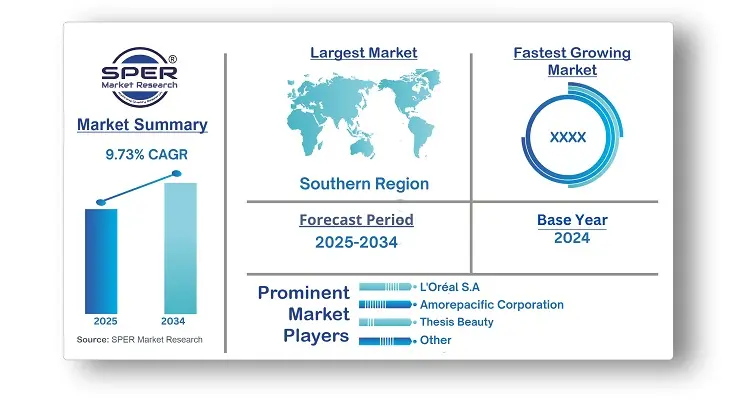
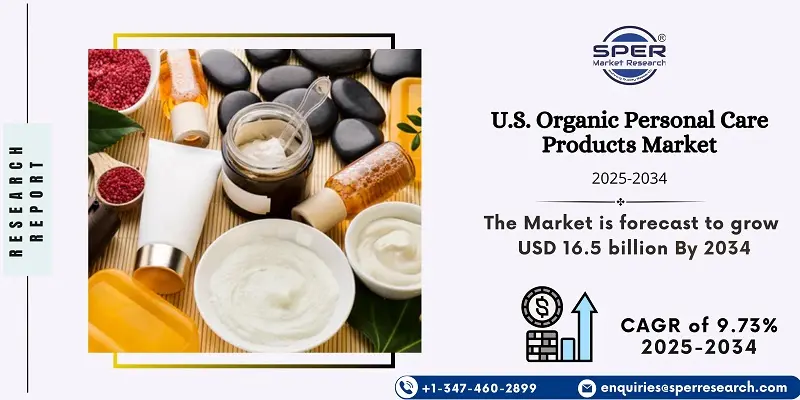
- In May 2025, Natural Grocers launched a new private-label skincare collection designed for daily use. The Natural Grocers Brand product line features body washes, scrubs, butters, and body creams that are produced in small batches using carefully selected ingredients.
- In April 2025, Unilever PLC acquired the personal care brand Wild, a digital-first company that has cultivated a dedicated consumer base through its direct-to-consumer and retail approach, providing natural and refillable products.
- In March 2025, Vincent, an Australian skincare brand, is poised to enter the U.S. market through a collaboration between Renovatio and Charlie Stone. The brand plans to unveil a core range that includes a three-step skincare regimen and supplements enriched with Activated Phenolics.
| Report Metric | Details |
| Market size available for years | 2021-2034 |
| Base year considered | 2024 |
| Forecast period | 2025-2034 |
| Segments covered | By Product, By Gender, By Distribution Channel |
| Regions covered | Northeast, Midwest, West, South |
| Companies Covered | L'Oreal S.A, Johnson & Johnson Consumer Services Inc (Neutrogena), Amorepacific Corporation, Thesis Beauty, Botanic Organic LLC, Aveda Corporation, Bare Escentuals Beauty, Inc, Burt's Bees, Inc, The Estee Lauder Companies Inc, Kiehl's LLC. |
- U.S. Organic Personal Care Products Market Size (FY’2021-FY’2034)
- Overview of U.S. Organic Personal Care Products Market
- Segmentation of U.S. Organic Personal Care Products Market By Product (Skin Care, Hair Care, Oral Care, Shower and Bath, Perfume/Fragrances)
- Segmentation of U.S. Organic Personal Care Products Market By Gender (Men, Women)
- Segmentation of U.S. Organic Personal Care Products Market By Distribution Channel (Hypermarkets & Supermarkets, Specialty Beauty Stores, Pharmacies & Drugstores, Online/E-commerce, Others)
- Statistical Snap of U.S. Organic Personal Care Products Market
- Expansion Analysis of U.S. Organic Personal Care Products Market
- Problems and Obstacles in U.S. Organic Personal Care Products Market
- Competitive Landscape in the U.S. Organic Personal Care Products Market
- Details on Current Investment in U.S. Organic Personal Care Products Market
- Competitive Analysis of U.S. Organic Personal Care Products Market
- Prominent Players in the U.S. Organic Personal Care Products Market
- SWOT Analysis of U.S. Organic Personal Care Products Market
- U.S. Organic Personal Care Products Market Future Outlook and Projections (FY’2025-FY’2034)
- Recommendations from Analyst
- 1.1. Scope of the report
- 1.2. Market segment analysis
- 2.1. Research data source
- 2.1.1. Secondary Data
- 2.1.2. Primary Data
- 2.1.3. SPERs internal database
- 2.1.4. Premium insight from KOLs
- 2.2. Market size estimation
- 2.2.1. Top-down and Bottom-up approach
- 2.3. Data triangulation
- 4.1. Driver, Restraint, Opportunity and Challenges analysis
- 4.1.1. Drivers
- 4.1.2. Restraints
- 4.1.3. Opportunities
- 4.1.4. Challenges
- 5.1. SWOT Analysis
- 5.1.1. Strengths
- 5.1.2. Weaknesses
- 5.1.3. Opportunities
- 5.1.4. Threats
- 5.2. PESTEL Analysis
- 5.2.1. Political Landscape
- 5.2.2. Economic Landscape
- 5.2.3. Social Landscape
- 5.2.4. Technological Landscape
- 5.2.5. Environmental Landscape
- 5.2.6. Legal Landscape
- 5.3. PORTERs Five Forces
- 5.3.1. Bargaining power of suppliers
- 5.3.2. Bargaining power of buyers
- 5.3.3. Threat of Substitute
- 5.3.4. Threat of new entrant
- 5.3.5. Competitive rivalry
- 5.4. Heat Map Analysis
- 6.1. U.S. Organic Personal Care Products Market Manufacturing Base Distribution, Sales Area, Product Type
- 6.2. Mergers & Acquisitions, Partnerships, Product Launch, and Collaboration in U.S. Organic Personal Care Products Market
- 7.1. Skin Care
- 7.1.1. Face Skin Care
- 7.1.2. Lotions, Face Creams, & Moisturizers
- 7.1.3. Cleansers & Face Wash
- 7.1.4. Facial Serums
- 7.1.5. Sunscreen/Sun Care
- 7.1.6. Sheet Face Masks
- 7.1.7. Others
- 7.1.2. Body Skin Care
- 7.1.1. Hair Removal Products
- 7.1.2. Lotions, Creams, & Moisturizers
- 7.1.3. Body Sunscreen/Sun Care
- 7.1.4. Body Scrub
- 7.1.5. Others
- 7.2. Hair Care
- 7.2.1. Shampo
- 7.2.2. Conditioner
- 7.2.3. Oils
- 7.2.4. Serums
- 7.2.5. Others
- 7.3. Oral Care
- 7.4. Shower and Bath
- 7.5. Perfume/Fragrances
- 8.1. Men
- 8.2. Women
- 9.1. Hypermarkets & Supermarkets
- 9.2. Specialty Beauty Stores
- 9.3. Pharmacies & Drugstores
- 9.4. Online/E-commerce
- 9.5. Others
- 10.1. U.S. Organic Personal Care Products Market Size and Market Share
- 11.1. Northeast
- 11.2. Midwest
- 11.3. West
- 11.4. South
- 12.1. L'Oréal S.A
- 12.1.1. Company details
- 12.1.2. Financial outlook
- 12.1.3. Product summary
- 12.1.4. Recent developments
- 12.2. Johnson & Johnson Consumer Services Inc
- 12.2.1. Company details
- 12.2.2. Financial outlook
- 12.2.3. Product summary
- 12.2.4. Recent developments
- 12.3. Amorepacific Corporation
- 12.3.1. Company details
- 12.3.2. Financial outlook
- 12.3.3. Product summary
- 12.3.4. Recent developments
- 12.4. Thesis Beauty
- 12.4.1. Company details
- 12.4.2. Financial outlook
- 12.4.3. Product summary
- 12.4.4. Recent developments
- 12.5. Botanic Organic LLC
- 12.5.1. Company details
- 12.5.2. Financial outlook
- 12.5.3. Product summary
- 12.5.4. Recent developments
- 12.6. Aveda Corporation
- 12.6.1. Company details
- 12.6.2. Financial outlook
- 12.6.3. Product summary
- 12.6.4. Recent developments
- 12.7. Bare Escentuals Beauty, Inc
- 12.7.1. Company details
- 12.7.2. Financial outlook
- 12.7.3. Product summary
- 12.7.4. Recent developments
- 12.8. Burt's Bees, Inc
- 12.8.1. Company details
- 12.8.2. Financial outlook
- 12.8.3. Product summary
- 12.8.4. Recent developments
- 12.9. The Estée Lauder Companies Inc
- 12.9.1. Company details
- 12.9.2. Financial outlook
- 12.9.3. Product summary
- 12.9.4. Recent developments
- 12.10. Kiehl's LLC
- 12.10.1. Company details
- 12.10.2. Financial outlook
- 12.10.3. Product summary
- 12.10.4. Recent developments
- 12.11. Others
SPER Market Research’s methodology uses great emphasis on primary research to ensure that the market intelligence insights are up to date, reliable and accurate. Primary interviews are done with players involved in each phase of a supply chain to analyze the market forecasting. The secondary research method is used to help you fully understand how the future markets and the spending patterns look likes.
The report is based on in-depth qualitative and quantitative analysis of the Product Market. The quantitative analysis involves the application of various projection and sampling techniques. The qualitative analysis involves primary interviews, surveys, and vendor briefings. The data gathered as a result of these processes are validated through experts opinion. Our research methodology entails an ideal mixture of primary and secondary initiatives.

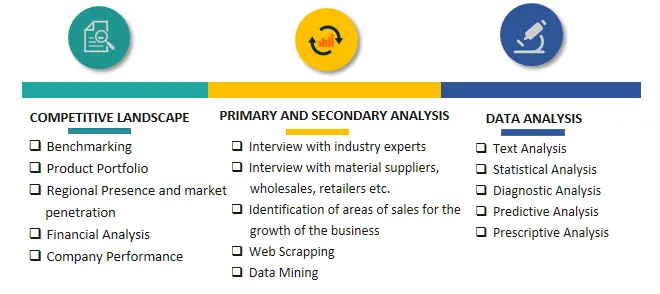

Frequently Asked Questions About This Report
PLACE AN ORDER
Year End Discount
Sample Report
Pre-Purchase Inquiry
NEED CUSTOMIZATION?
Request CustomizationCALL OR EMAIL US
100% Secure Payment

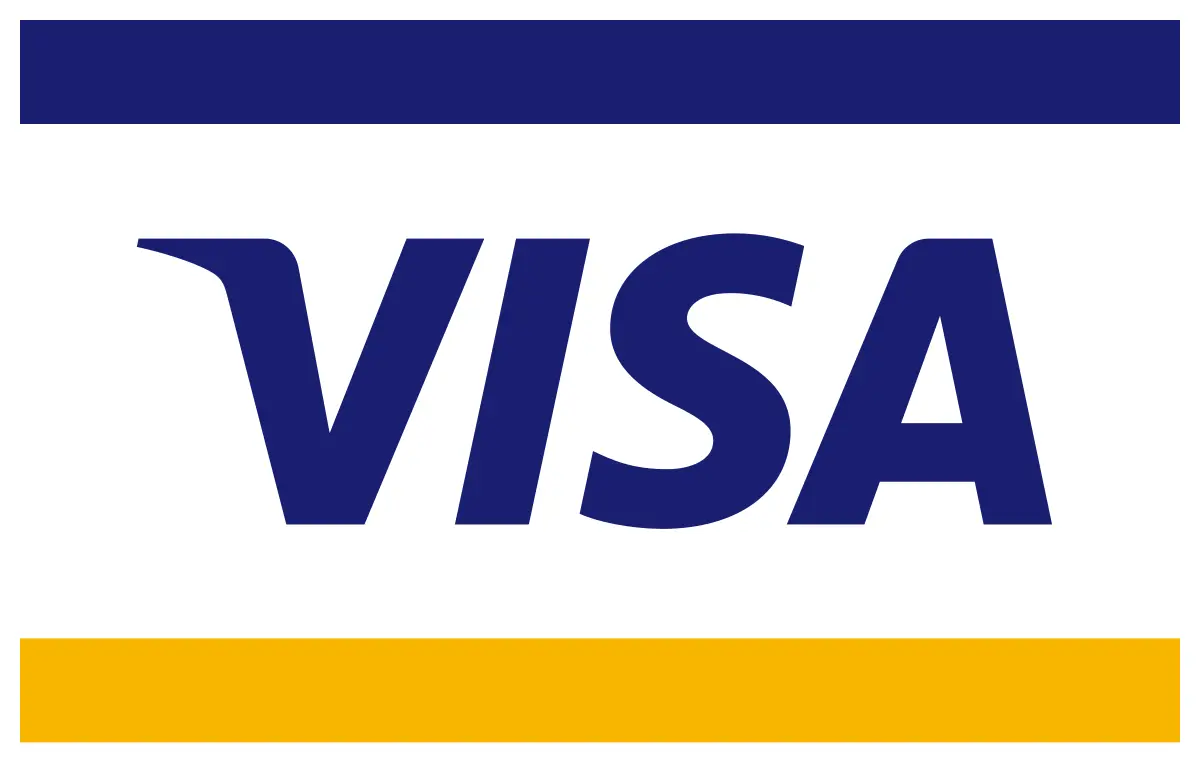

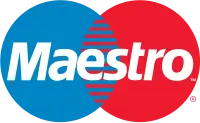


Related Reports
Our Global Clients
Our data-driven insights have influenced the strategy of 200+ reputed companies across the globe.






















